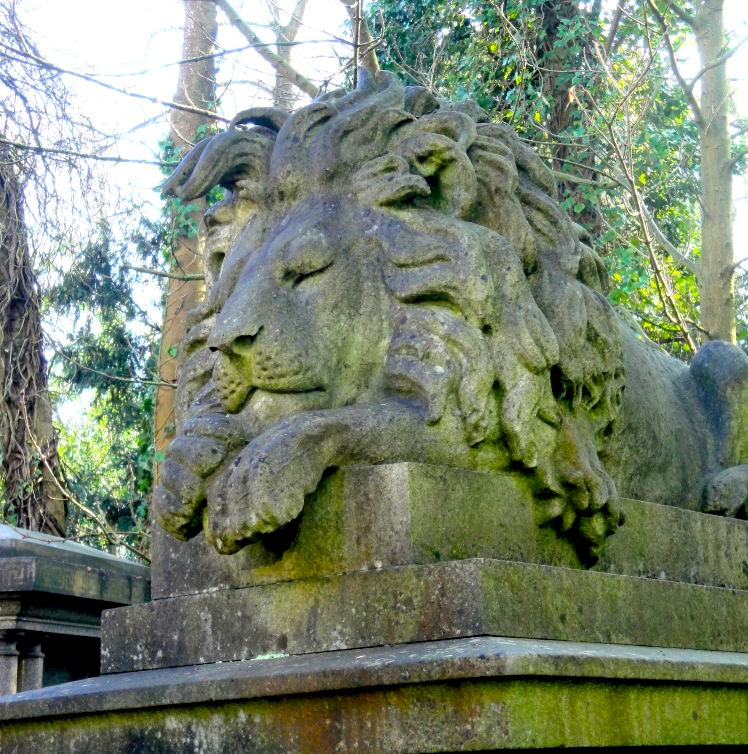
Funerary monument to George Wombwell (1777-1850), the founder of a famous menagerie, Wombwell's Travelling Circus. Western Cemetery, Highgate, London, N.6. According to Lloyd's Weekly London Newspaper, this was the largest menagerie in the country in the early nineteenth century. Wombwell, who founded the menagerie in 1809, in ten years' time needed fourteen carriages pulled by sixty horses in order to transport his animals from one place to another (Baratay and Hardouin-Fugier 109).



In 1846, Wombwell was reported to be the proprietor of thirty lions, five elephants, two rhinoceroses and whole herds of tigers, bears, and so forth (see "George Wombwell"). Menageries of this type continued to be popular right through the Victorian period, reaching the height of their popularity in its last three decades (Baratay and Hardouin-Fugier 109).
Lions on funerary monuments are usually symbolic, intended to suggest fortitude and bravery, as for example in the one erected to the Lendy brothers in Sunbury-on-Thames. But this relaxed and docile-looking creature suggests Wombwell's life's work as someone who kept animals for entertainment purposes. The lion doesn't seem to be mourning his loss!
Related Material
- Lendy Memorial in Sunbury-on-Thames
Photographs by Robert Freidus, reproduced here by kind permission of Highgate Cemetery. Formatting by the author. [Click on the images for larger pictures. See the index for the cemetery for many more views of the cemetery and its monuments.]
Bibliography
Baratay, Eric, and Elizabeth Hardouin-Fugier. Zoo: A History of Zoological Gardens in the West. Trans. Oliver Welsh. London: Reaktion, 2002.
"George Wombwell." In "Public Amusements of the Week." Lloyd's Weekly London Newspaper. 31 May 1846: 6. 19th Century British Newspapers. Web. 18 May 2014.
"George Wombwell and the Travelling Menagerie." georgewombwell.com. Web. 18 May 2014.
Last modified 18 May 2014